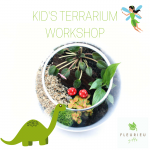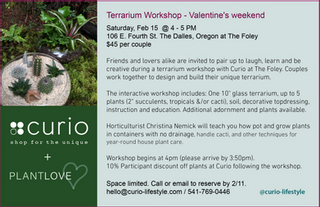We always come across the term Terrarium in our daily life. A terrarium is a miniature garden, placed inside a small container made of glass or transparent plastic-like bottles, bowls, or jars. We can easily make different types of terrariums in our home. However, before going for making it, let us explore the types of terrarium. Generally, terrariums are based on the types of plants we want to grow in them. There are two main types of terrarium, each with unique benefits, requirements, and uses.
Open Terrariums

This is an open container terrarium. It does not have a lid. This type of Terrarium Singapore is well suited for a wider variety of plants compared to other types. This is most suitable for succulents since it creates a dry environment for them. They often need direct sunlight rather than indirect sunlight for the proper growth of the plants in it. Other than that, it also comes with many advantages:
- There is no issue with condensation as it is open
- The airflow is also adequate
- As open from the top, less chance of becoming rot or mold
- Nevertheless, the overall humidity is low but it gives you a chance to control the moisture level. We can adjust the moisture level by adding or removing water.
One major disadvantage of the open terrarium is that they are not self-sufficient. As they do not have a coverlid, they just end up coming out of the container. However, they are more ornamental and versatile when it comes to home décor.
Closed Terrariums
Close Terrariums are also known as sealed terrariums. Unlike open terrariums, these types of terrarium have a lid. As it has closed, this setup produces a slightly higher temperature inside which helps to evaporate all the moisture that comes from plants and soil. One of the important benefits of the closed terrarium is that the plants that grow within it do not dry easily. Because as the jar is closed the water vapors that evaporate within the jar get back to the soil. It prevents soil from drying out and always keeps the plants and soil moist and damp.
Some common ways we can maintain a closed terrarium are
- Watch out for Diseases: As it is closed, the environment in the jar is damp and moist which is the perfect ground for diseases.
- Closed terrariums have their in-built water cycle. So only, add water when the plants start to droop or soil become dry.
- Prune the yellow leaves of the plants or when they touch the glass or lid
The ideal types of plants that must be chosen to grow in the terrarium are the ones that do well in high humidity and warm temperatures. Therefore, it is not advisable to grow succulents or cacti, as they needed dry conditions. Some of the best-suited plats, which prefer moist and damp conditions, are ivy, ferns, mosses, nerve plants and polka dot plates. Unlike open terrariums, they are self-sufficient. They are similar to greenhouse considering how the light and heat enter.
Terrariums have their ecosystem, where plants inside it water themselves through transpiration and condensation. It just fascinates us when we see a terrarium.







